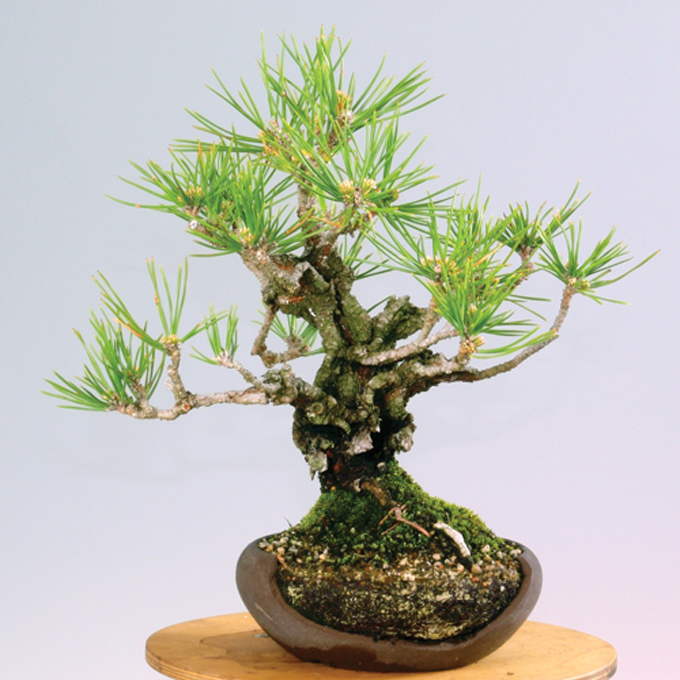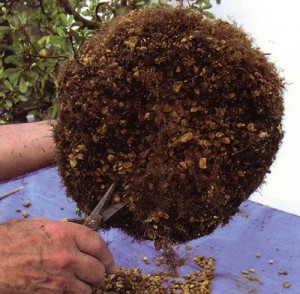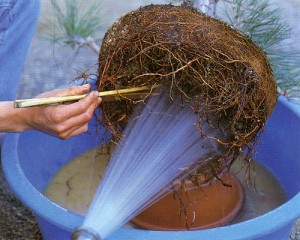 Time to repot. Morten Albek intentionally broke the pot to show this Cork bark Japanese black pine’s dense root mass. From Morten’s book, Shohin Bonsai (Stone Lantern Publishing).
Time to repot. Morten Albek intentionally broke the pot to show this Cork bark Japanese black pine’s dense root mass. From Morten’s book, Shohin Bonsai (Stone Lantern Publishing).
This post originally appeared in August 2009 (Bonsai Bark’s first year, which means we are now in year 4 going on year 5). I’m still in the midst of mid-summer semi vacation time, so we’ll continue to dig through some old posts to see if we can find anything useful. In this case, fall is just around the corner for some of us (sadly), so why not discuss fall transplanting? BTW: I’ve done a little editing and added a few words to the original.
Why transplant in the fall?
Most plants experience strong root growth in the fall. Soil retains some of the day’s warmth at night, so root growth may continue well beyond what you might expect.
Also, when you transplant in the fall your trees can take full advantage of the next growing season. If you transplant in the spring (that’s when most people do it), by the time the tree recovers, you’ve lost part of the growing season.
Why not transplant in the fall?
If you have an early winter and your bonsai haven’t fully recovered from transplanting, then you risk serious damage (or worse). If you rootprune heavily, the risk goes up. If you live in a cold climate and you want to play it safe, fall transplant only those trees that need light to moderate root pruning.

Doing some light rootpruning. From Robert Callaham’s Satsuki Azaleas, for Bonsai and Azalea Enthusiasts (Stone Lantern Publishing).
When?
When to transplant depends mostly upon where you live. There are other considerations too, like the type of tree, the health of the tree, your experience and confidence, and how much you need to prune the roots.
A rule of thumb
Six weeks before you might expect an early hard frost, is a pretty good rule of thumb for fall transplanting. However, you can’t be too literal about this. Prolonged late hot spells need to be considered (here in northern Vermont, where summers are often quite mild, this is usually not a problem). How much you need to rootprune and the type of tree also need to be considered.

If the soil is old and compacted you may need to remove it all (Bonsai Today and other sources are full of examples of this, but some very knowledgeable people say that this can be a very high-risk procedure). If you do embark on this path, a hard steam of water and the right roots tools are the best way to get it all off. Because the roots are so compacted, you’ll need to do some serious rootpruning. Unless you are an old pro, you might be better off saving heavy rootpruning for spring transplanting. The photo is from Bonsai Today issue 17.
The type of tree matters
Deciduous trees need special consideration as you don’t want to rootprune when they have a full canopy of leaves. Conifers, especially junipers, and broad leaf evergreens are usually safest for fall transplanting, though there are variables here too. If you need more information, try to talk to someone knowledgeable who lives in your area.
Don’t forget aftercare
After transplanting your margin of error goes down, especially with watering.
Thanks for sharing helpful information of tree transplanting.
Keep it up…